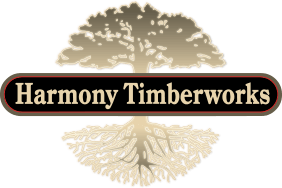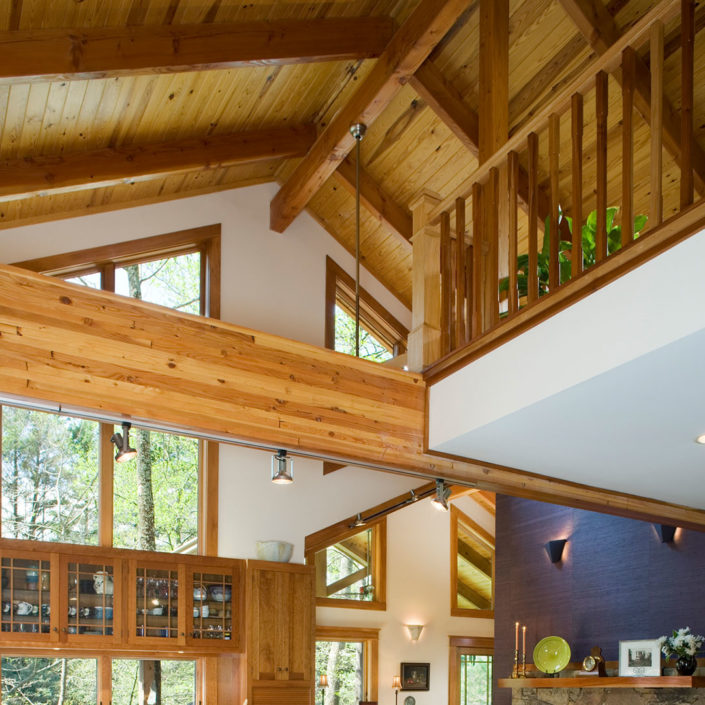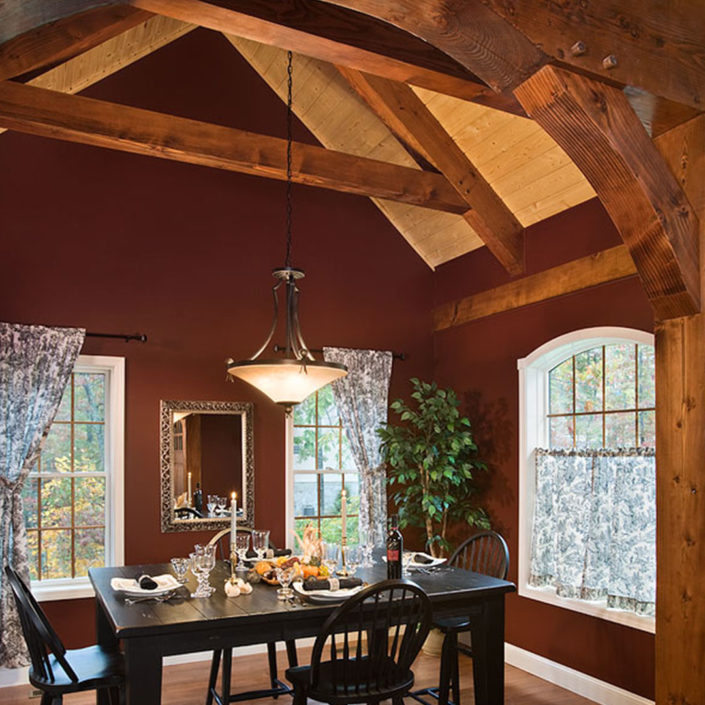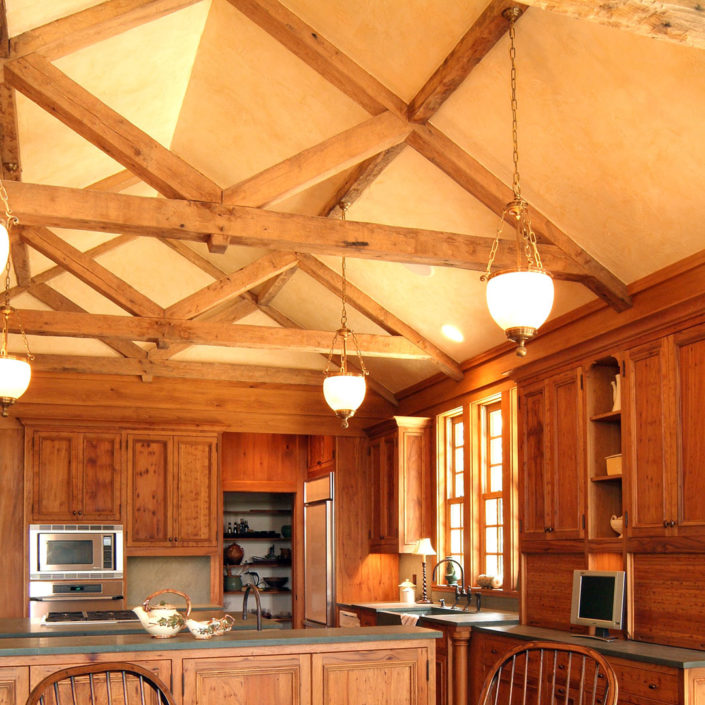The Raised Collar Tie Truss
The Raised Collar Tie Timber Truss enables passive solar design with high windows that fill upper rooms with daylight. The lower chord can easily be expanded into an exposed beam second floor system. This truss is valued in heavy timber construction for its versatility and simplicity.
Timber frame truss systems are the linchpins of a well-built home. You can think of this joinery as the backbone that holds a home and roof together. Without the overarching support of the heavy timber construction, rustic cabins and cathedral ceilings would crumble in the face of the elements. Unfortunately, a well-engineered timber frame system is usually an afterthought for hurried homeowners who settle on inferior building kits. While a timber frame system doesn’t receive the same amount of praise and attention as a home’s beautiful rustic feel, it leaves a lasting impression on builders who took the extra step in crafting a sturdy and elegant home. Builders have almost always regretted their decision to settle for inferior building materials on that first windy night of winter.
But what is a timber truss system? How does it work? Timber frame roof systems are sort of like a bridge. They are built with hand-crafted timber that provide mutual support to the structure as a whole. Each piece of timber works together to support the roof’s mighty frame. One of the truss systems’ more unsung heroes are collar ties. Many homeowners don’t even notice collar ties until it’s time to remodel or when they’re looking for a little extra elbow room. Collar ties are the glue of our sturdy timber truss systems. Without the binding nature of a well-placed collar ties, you might feel the gentle swaying of your home on a windy night. Collar ties essentially work to prevent the roof from separating at the ridge due to the uplift of wind. They are a necessary building component. Collar ties complement the rafter ties, which resist the horizontal forces of Mother Nature. Located near the bridge of the timber frame truss systems, collar ties also help prevent rafters from separating near the ridge of your home. Rafter roofs are some of the simplest, but strongest building styles in modern construction. Collar ties provide the necessary support and tension to a well-designed timber frame truss system.





